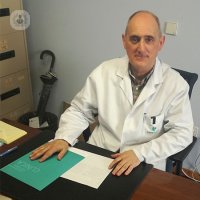Apnea Syndrome Sueno II:diagnosis and treatment
Written by:The 2005 National Consensus Document on Sleep Apnea-Hypopnea Syndrome (SAHS) defined SAHS as "a picture of excessive drowsiness, cognitive-behavioral, respiratory, cardiac, metabolic or inflammatory disorders secondary to repeated bouts of obstruction upper airway (VAS) during sleep.
Diagnosis of Sleep Apnea-Hypopnea Syndrome (SAHS)
The reference method for the diagnosis of patients with suspected SAHS is the conventional polysomnography (PSG) consisting of a continuous record of electroencephalogram, electrooculogram and mentonian electromyogram (to evaluate the sleep fosters and the micro arousals), as well as other variables to quantify the respiratory disorders and their repercussions (pulse oximetry, airflow nasobucal medial nasal cannula and thermistor, snoring, thoracoabdominal movements, electrocardiogram, position in bed and leg movements).
PSG should be performed at night or in the usual sleep of the patient, with a record of more than 6.5 hours and should include at least 3 hours of sleep. Therefore, PSG is a relatively expensive, laborious and technically complex technique that is not available to all centers, and because of the great demand for explorations it can not be used in all patients.
In order to face these difficulties, we have developed portable equipment that record only the respiratory variables, so this technique is called Respiratory Polygraphy (PR) and allows the study to be carried out in the hospital or in the patient's home. PR is an acceptable method to confirm the diagnosis of patients with clinical suspicion of moderate or high SAHS.
Treatment of Sleep Apnea-Hypopnea Syndrome (SAHS)
The objectives of the treatment of SAHS are, on the one hand, to achieve control of symptoms (mainly drowsiness) and on the other hand to minimize the risk of accidents and cardiovascular. The therapeutic alternatives of patients with SAHS involve variable measures according to the severity spectrum of the disease. These range from general measures aimed at reducing collapse of the upper airway to surgical measures and devices.
 Airway pressure (nasal CPAP) is the first choice treatment in patients with SAHS. CPAP consists essentially of a turbine or motor that generates a variable air flow and transmits a continuous positive pressure on the upper airway through a tube is connected to a mask, adapted to the patient, which can be nasal, nasobucal or type nasal pads
Airway pressure (nasal CPAP) is the first choice treatment in patients with SAHS. CPAP consists essentially of a turbine or motor that generates a variable air flow and transmits a continuous positive pressure on the upper airway through a tube is connected to a mask, adapted to the patient, which can be nasal, nasobucal or type nasal pads
The scientific evidence of CPAP today is indisputable and has proven to be effective and cost-effective. The different scientific societies have established CPAP prescription indications. These are based on the severity of SAHS, as measured by the apnea-hypopnea index (AHI), and the coexistence of symptoms and comorbidities.
However, the treatment of accompanying causative factors must also be taken into account: improving sleep hygiene, treating obesity, treating nasal obstruction, repairing anatomic factors such as adenoid and / or tonsil hypertrophy and mandibular deformations.
Mandibular advancement devices (DAM) are effective in the treatment of snoring and mild to moderate SAHS with low body mass index and non-significant desaturations. They may also be useful as a second choice in patients who do not tolerate CPAP.
A multitude of surgical techniques have been described that seek to reduce anatomical obstruction in the nose, oropharynx and hypopharynx with different levels of aggressiveness and efficacy. The surgical techniques used include septoplasty, uvulopalatopharyngoplasty, tongue-base surgery, mandibular advancement surgery, and radiofrequency ablation. Although surgery may play an important role in patients with SAHS who do not tolerate CPAP, we should not forget that it is not free of complications and that its efficacy is often unpredictable.


